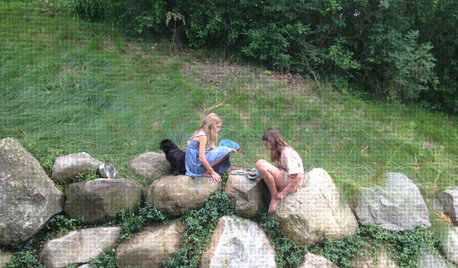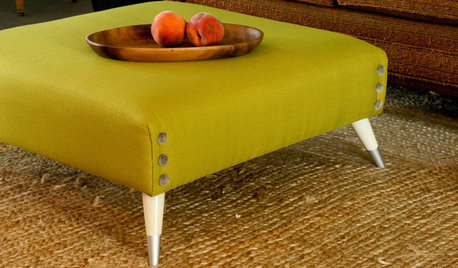Turning or mixing the worm bed
Sam55
10 years ago
Related Stories

GARDENING GUIDESHouzz TV: Make a Worm Bin for Rich Soil and Happy Plants
A worm-powered compost bin that can fit under a sink turns food scraps into a powerful amendment for your garden. Here’s how to make one
Full Story
LIFETurn Off the Video Games and Turn On Your Kid's Creativity
Going nuts planning summer activities? Kids overdosing on screen time? It may be time to foster more self-directed play
Full StoryFURNITURECelebrating a Classic: Spool-Turned Furniture
See how a timeless woodworking style from the 19th century blends beautifully with just about any décor
Full Story
LIFESlow Living 101: Tips for Turning Off the Chaos
It may feel as though you're too busy to slow down and enjoy life. But even little changes can have a big effect
Full Story
DIY PROJECTSReinvent It: A Houzzer Turns Thrifted Pieces Into a Swinging Daybed
Snuggle up on this delightful porch piece and you'd never guess it's made of salvaged scraps
Full Story
COLORFUL HOMESHouzz Tour: Turning Tradition on Its Head in Vermont
Leopard-spotted stairs, Victoriana paired with Lucite and other daring style moves give a home in a shire a completely new twist
Full Story
DIY PROJECTSTurn a Shipping Pallet Into a Stylish Ottoman
Get the step-by-step instructions for upholstering your own mod living room centerpiece
Full Story
REMODELING GUIDESHouzz Tour: Turning a ’50s Ranch Into a Craftsman Bungalow
With a new second story and remodeled rooms, this Maryland home has plenty of space for family and friends
Full Story
HOUZZ TOURSMy Houzz: Modernism Takes a Natural Turn in Pennsylvania
Generous wood throughout and woodsy sights outdoors soften and warm this home’s modern lines
Full Story
BEFORE AND AFTERSA Makeover Turns Wasted Space Into a Dream Master Bath
This master suite's layout was a head scratcher until an architect redid the plan with a bathtub, hallway and closet
Full StorySponsored
More Discussions






chuckiebtoo
sbryce_gw
Related Professionals
River Forest Landscape Architects & Landscape Designers · Taylorsville Landscape Architects & Landscape Designers · Clermont Landscape Contractors · Williamsburg Landscape Contractors · Cincinnati Landscape Contractors · Cornelius Landscape Contractors · Eureka Landscape Contractors · Harvey Landscape Contractors · Pleasant Grove Landscape Contractors · Bound Brook General Contractors · Columbus General Contractors · Country Club Hills General Contractors · Goldenrod General Contractors · Merrimack General Contractors · Norfolk General Contractorshummersteve
equinoxequinox
chuckiebtoo
equinoxequinox
chuckiebtoo
equinoxequinox